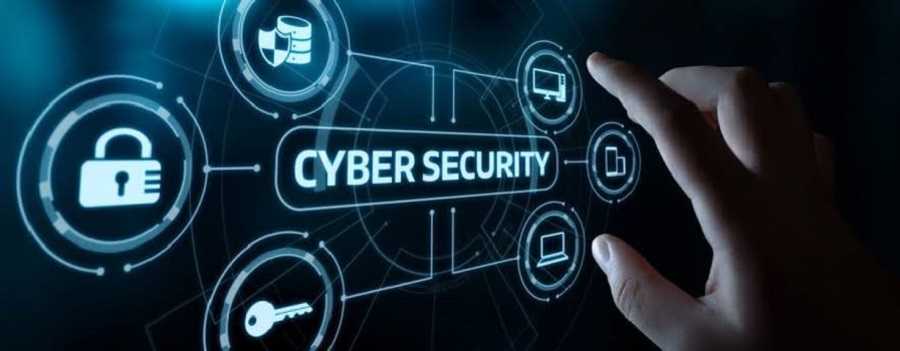Remote work can facilitate remote workers to balance their personal and professional lives, improve job satisfaction, and boost productivity. It can also provide employees with a sense of autonomy and control in their careers. Some employees even find remote work rewarding because it allows them to work from home or another remote location, allowing them to spend more time with family or pursuing hobbies. However, working remotely comes with its own set of risks.
Keeping data safe while working remotely might require additional security measures. This post will cover some precautions that remote workers can take to protect themselves and data.
Risks associated with remote work
– Remote work is growing in popularity, but there are several risks associated with it. Lack of face-to-face communication can lead to misunderstandings and increased chances of mistakes. Employees may be tempted to work from home without proper safeguards in place. This can lead to distractions, fatigue, and other problems.
– Employers need to be proactive in protecting their data and intellectual property. They should ensure remote workers use strong passwords and encryption when handling sensitive data.
– Insurance companies may not cover remote work injuries the same way they would if the employee was onsite. This is because they may not consider remote work a job, making it difficult for policyholders to obtain coverage for such injuries.
By being aware of the risks, employees and employers can stay safe while working remotely.

Ways to protect your data while working remotely
If you’re working remotely, it’s important to protect your data from cyber-attacks. Here are some steps you can take to secure your data while working remotely.
Use a secure remote access platform
Sharing data securely from anywhere in the world has become increasingly important in recent years. The use of remote access software has made it possible for employees to work from home or from a coffee shop without sacrificing security. However, there are still concerns about data security and privacy when working remotely. A remote access platform (RAP) can provide a safe and secure way to work from anywhere in the world.
An RAP provides several benefits, including remote data encryption and management. It ensures that sensitive information is protected from prying eyes while keeping users’ information isolated from the main office computer network. Additionally, an RAP allows users to manage their work remotely, which can save time and energy. Overall, a remote access platform is essential for today’s workforce looking to stay productive while working remotely.
Ensure all Internet Connections Are Secure
To stay safe and secure while working remotely, it’s important to ensure all internet connections are secure. This means using a VPN when working from home or on a public network. It also means using a password manager to create strong passwords for all of your online accounts. And, of course, it means ensuring all files are encrypted before sending them over the network. Overall, working securely while remote requires constant vigilance and effort on everyone’s part, but it is critical to ensure data security and stay safe and productive while working remotely.
Keep Passwords Strong and Varied — and Use a Password Manager
Keeping passwords strong and varied is vital to protecting data from unauthorized access. A strong password is the first line of defense in protecting your data. That means using a password with a minimum of six characters and including special characters such as upper- and lowercase letters, numbers, and symbols.
To make passwords harder to crack, use different passwords for different sites and services. For example, use a different password for work email than personal email. Also, use unique passwords for each service you use, such as password manager or social media account. Additionally, use a password manager to store all your passwords in one place. This will save time and make it easier to manage them.
Password managers also offer other security features, such as two-factor authentication or encryption, which can help protect your data against unauthorized access. These tools can be helpful when working remotely or on sensitive projects that require increased security measures. So keeping strong passwords and using a password manager can help ensure the security of your data no matter where you work from.
Use a VPN
Using a VPN, or virtual private network, is one way to keep your data safe and secure when working from home. A VPN encrypts all of your traffic, preventing anyone from spying on your online activities. As a result, it helps safeguard your data while you’re working from home. To use a VPN at work, you’ll need a device that supports remote access, such as a laptop or smartphone. But if you don’t have one, you can always use a virtual private network (Vpn) software to route all of your remote work through an outside connection. The best part about using a VPN at work is that it’s completely free and easy to use. Whether you’re working from home or on the go, a VPN is essential for protecting your data and privacy online.
Use a password manager
A password manager is a secure way to store your passwords and other sensitive information, allowing you to easily create, store, and manage complex passwords. This software can automatically log you into websites and applications while protecting your data from unauthorized access. One of the best features of a password manager is that it can remember different passwords for different websites and applications, allowing you to easily access your accounts without having to memorize dozens of passwords.
Password managers also offer two-factor authentication and encrypted files, which provide additional security and privacy benefits. They are available free of charge and can be downloaded on both desktop and mobile devices, making them convenient and easy to use. Overall, password managers are a valuable tool for protecting your data while working remotely.
Rely on Two-Factor Authentication
Two-factor authentication is a method of verifying your identity by requiring you to provide two pieces of information: a password and a code. In addition to requiring users to use strong passwords and change them regularly, two-factor authentication can also help protect data from unauthorized access. Using two-factor authentication can help ensure that only authorized users have access to sensitive data.
Two-factor authentication can be achieved in various ways, including through mobile apps or via text messages. Relying on this security measure can help safeguard your data from potential threats while working remotely. By using two-factor authentication, you can ensure that only authorized users have access to sensitive data.
Restrict access to certain applications
You can restrict access to certain applications on your remote work computer using restricted user accounts. This can help ensure that only authorized users have access to sensitive information. You could also use virtual private networks (VPNs) to protect your data while working remotely. These networks use a secure connection over an internet connection to allow remote users to access data on a private network. You can encrypt your data using BitLocker, which helps keep your information safe and secure. It can be helpful if you work with sensitive information such as passwords or personal files. It’s also a good idea to create passwords for your remote work computer and store them in a secure location. This way, you won’t have to remember multiple passwords for different devices. By creating strong passwords and storing them in a safe location, you can save time when accessing your remote work computer.
Conclusion
The cybersecurity threats that remote employees face are many and varied. Sometimes, the best solution is to simply stay up-to-date on cybersecurity trends and best practices. The cybersecurity threats that remote employees face are many and varied. Sometimes, the best solution is to simply stay up-to-date on cybersecurity trends and best practices. Comment below if we’ve missed any cybersecurity threats faced by remote employees in the comments section below. Besides being secure, remote working can also be a boon for worker productivity. With technology like video conferences and virtual assistants, remote employees can work from anywhere with just a laptop and internet connection.





